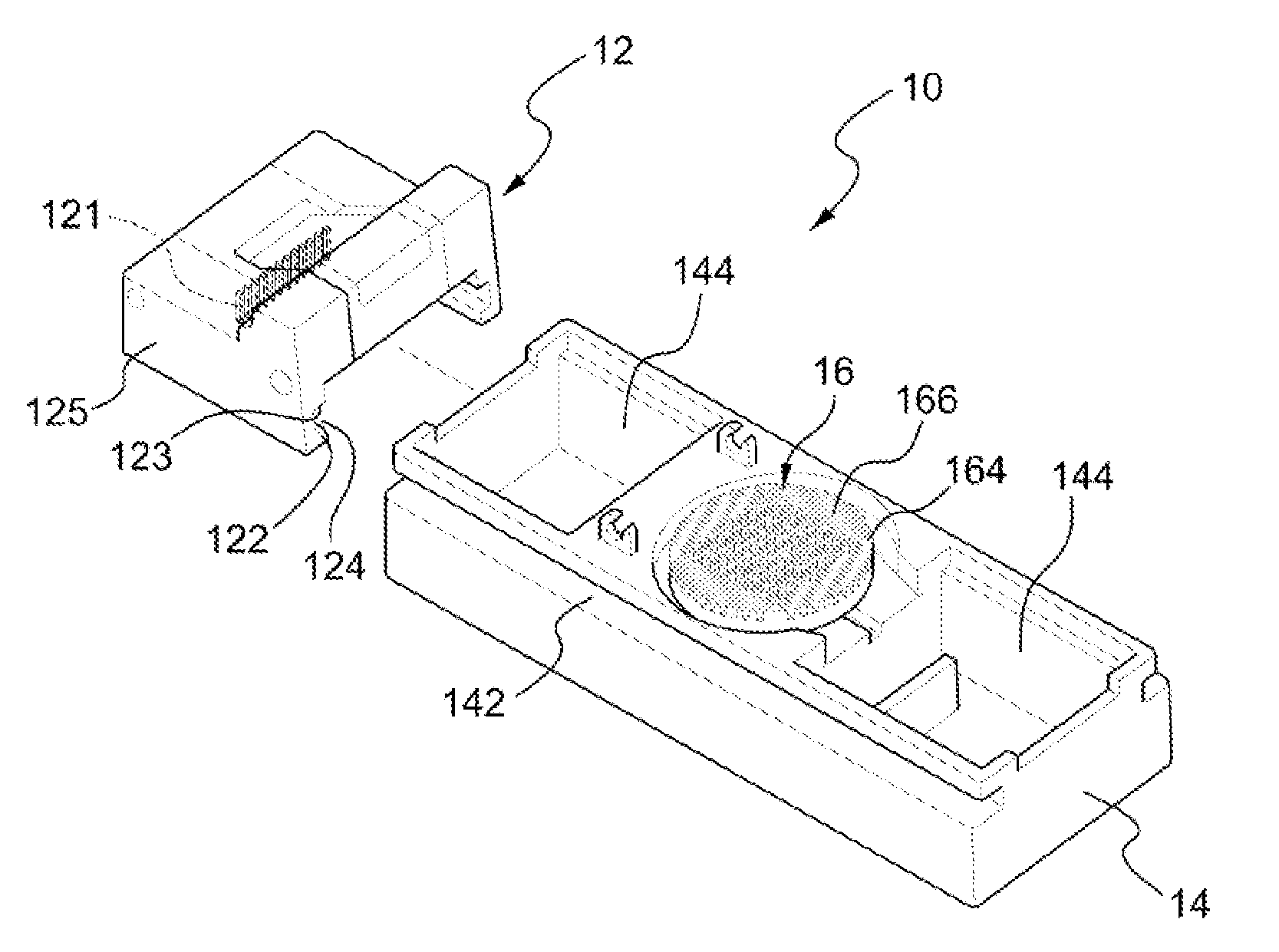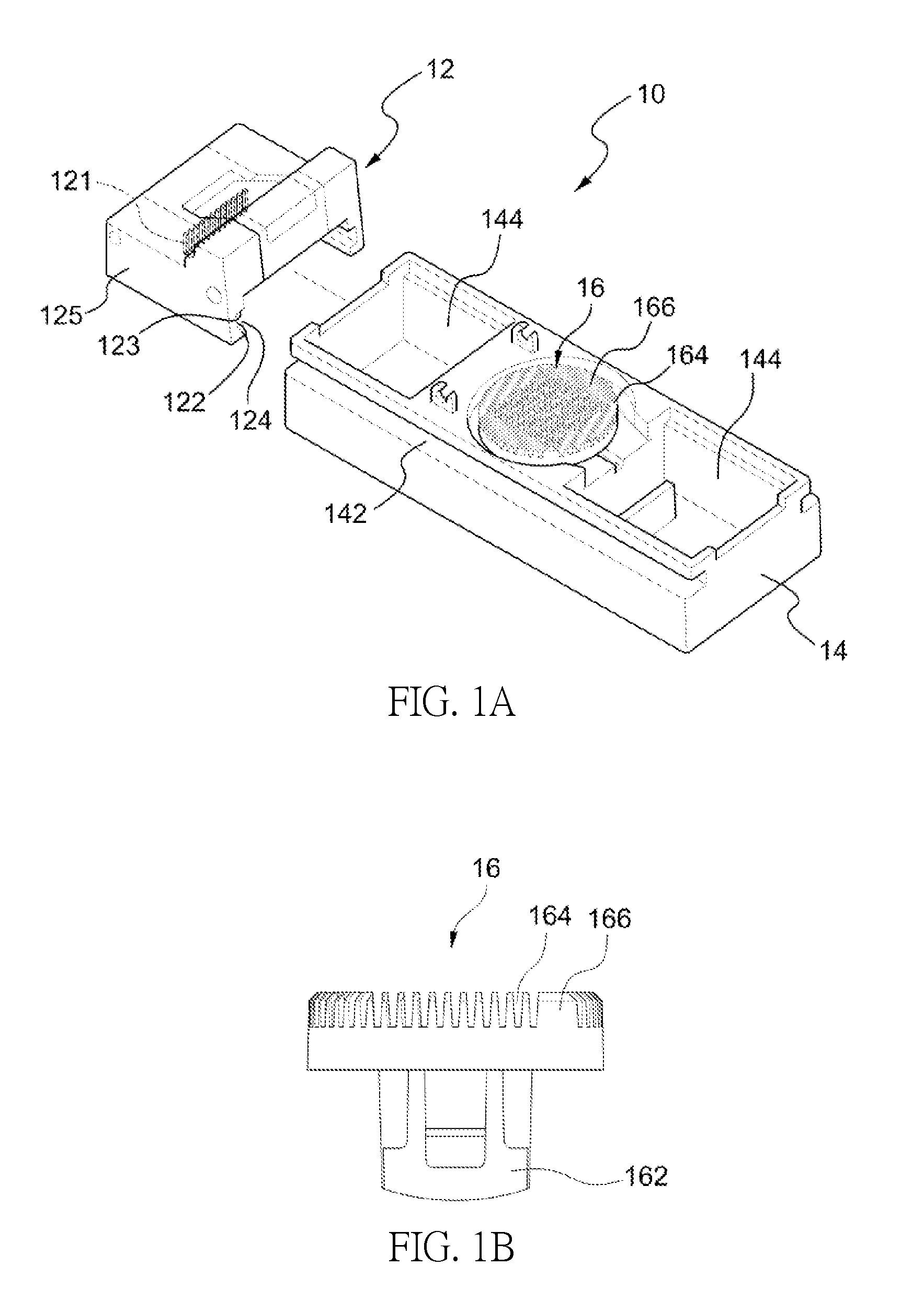Method for repair of articular cartilage defect and a device used therein
a technology of articular cartilage and repair method, which is applied in the direction of prosthesis, drug composition, biocide, etc., can solve the problems of articular cartilage defects, relative slow metabolism, and serious and painful impact or rubbing of two bones,
- Summary
- Abstract
- Description
- Claims
- Application Information
AI Technical Summary
Benefits of technology
Problems solved by technology
Method used
Image
Examples
example
Example 1
Use of Cartilage Fragments in Combination with PRF in the Single Surgical Procedure
Preparation of PRF
[0046]Pigs are selected for use as laboratory animals in the present embodiment. Six ml blood is drawn from the pigs. The blood is collected in a container, such as a centrifuge tube, holding a separator polyester gel, and in the present embodiment, the centrifuge tube is used to contain the blood. The centrifuge tube containing the blood is centrifuged at a speed in the range of 1000 to 5000 rpm for 1 to 20 minutes, and preferably, also at 2500 to 3500 rpm for 8 to 12 minutes. The centrifuge time may be adjusted according to the centrifuge speed. After centrifugation, jelly-like PRF is obtained in the middle part of the centrifuge tube, and then sterile forceps are used to clip the jelly-like PRF out. All steps in the preparation of the PRF are performed under standard disinfection procedures. The 6 ml whole blood may yield 1-1.5 ml of PRF. The size of the autologous PRF is...
PUM
 Login to View More
Login to View More Abstract
Description
Claims
Application Information
 Login to View More
Login to View More - R&D
- Intellectual Property
- Life Sciences
- Materials
- Tech Scout
- Unparalleled Data Quality
- Higher Quality Content
- 60% Fewer Hallucinations
Browse by: Latest US Patents, China's latest patents, Technical Efficacy Thesaurus, Application Domain, Technology Topic, Popular Technical Reports.
© 2025 PatSnap. All rights reserved.Legal|Privacy policy|Modern Slavery Act Transparency Statement|Sitemap|About US| Contact US: help@patsnap.com



